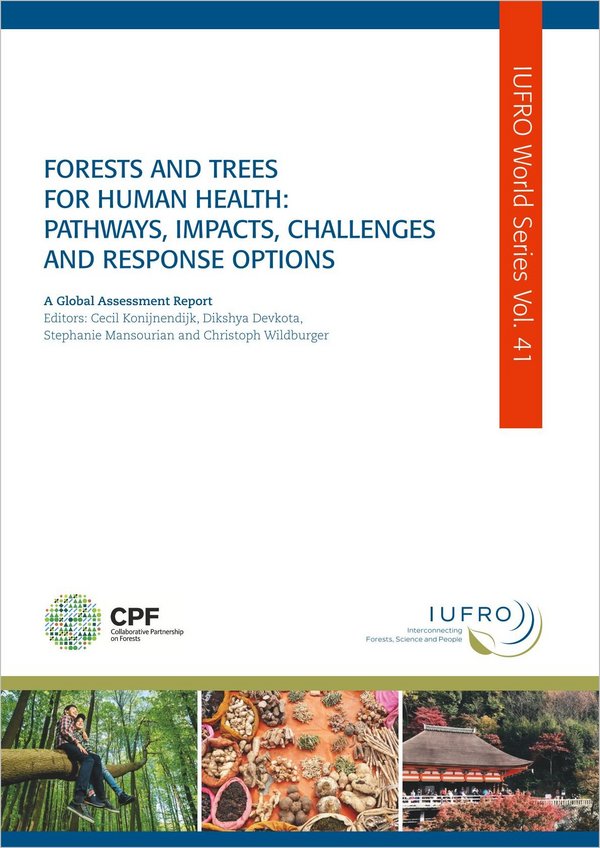- Share this article
- Subscribe to our newsletter
Forests and Trees for Human Health
Forests and green spaces offer a wide range of physical, mental, social and spiritual health benefits according to existing evidence. They can have positive effects on neurodevelopment in children, diabetes, cancer, depression, stress-related disorders, cognitive aging and longevity, and are critical for enhancing social interactions, recreation and relaxation. This is the conclusion of a new report entitled Forests and Trees for Human Health: Pathways, Impacts, Challenges and Response Options published by the Global Forest Expert Panels (GFEP) Programme of the International Union of Forest Research Organizations (IUFRO) in March 2023.
Forests help ensure a healthy life
Although all life stages are impacted, including before birth, the effects on children are particularly important, not least because of repercussions later in life. Evidence highlighted in the report shows that no less than 24 per cent of global deaths are due to negative environmental factors such as air pollution and extreme weather events. Premature death and disease can be prevented through healthier environments worldwide.
Forests, trees and green spaces also provide numerous goods and services, including medicines, nutritious foods, and other non-wood forest products that contribute to human health. Medicinal plants, which are particularly important to indigenous peoples and local communities (IPLCs), provide basic health care for 70 per cent of the world’s population.
Some negative impacts
While most of the health outcomes of forests, trees and green spaces are positive, there are also some negative impacts that need to be considered and mitigated. Human health can be impacted adversely by allergies, diseases transmitted by animals and reduced air quality caused by forest fires.
Global crises such as climate change, land-use change, urbanisation and biodiversity loss endanger the role that forests and trees provide as ‘safety nets’ for the food security and livelihoods of vulnerable populations. These negative impacts are mostly due to factors such as disturbed relationships between forests and people, poor forest conservation and management, or inappropriate choice of tree species in areas where people live.
Enhancing forest health outcomes
Decision-makers should enhance positive forest and tree health outcomes while minimising potential negative impacts, especially on vulnerable populations. A solution to the malaria epidemic, for example, is not to destroy the forest and wetland habitats of the mosquitos transmitting the disease – deforestation can actually increase the malaria risk. Instead, we must invest in sustainable forest management and urbanisation processes that avoid loss of natural habitats.
Another misconception is the attribution of the increase in pollen allergies to urban forests and green spaces. In fact, allergic diseases are more prevalent in high-income countries, often caused by unhealthy lifestyles disconnected from nature, and exacerbated by climate change, as warmer temperatures prolong the pollen season. Global trends and challenges such as climate change and pandemics are accelerating, intensifying the importance of forest-human health relations – and urgent action is required.
Climate change, urbanisation and lifestyles that are disconnected from nature are among the main reasons for many of the health challenges faced by societies around the world, including malnutrition, cardiovascular diseases and mental health problems.
Land-use change is estimated to have caused more than 30 per cent of new diseases since 1960. These trends also put the health of forests and trees at risk as they are among the drivers behind wildland fires, heavy storms and forest pests. We must therefore improve people’s understanding of the benefits nature provides to humans, and consequently, the role that the ongoing destruction of nature is playing in increasing health hazards.
(IUFRO/ile)
Read more and download the report





Add a comment
Be the First to Comment